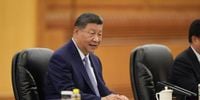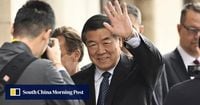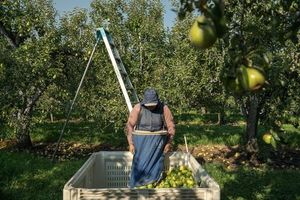As the world’s two largest economies edge toward a critical diplomatic crossroads, the prospect of a new U.S.-China trade deal has never felt more fraught—or more consequential. With a high-stakes summit between President Donald Trump and President Xi Jinping looming at the end of October 2025 in South Korea, both sides are scrambling to salvage negotiations that could reshape not only their own economic futures but the entire global order. Yet, beneath the surface of official optimism, deep fissures remain, and the outcome is anything but certain.
The backdrop to these tense talks is a complex web of tariffs, retaliatory measures, and shifting alliances that have left the global agricultural and manufacturing sectors reeling. According to Reuters, the U.S. and China are racing to keep their planned leaders’ summit on track, even as each side accuses the other of stoking tensions. President Trump, despite recently hailing “progress” on issues from trade to fentanyl smuggling, has reiterated his threat of 100% tariffs if the summit fails to produce a deal. Meanwhile, China’s recent expansion of export curbs on rare earth minerals—a critical component in everything from smartphones to electric vehicles—has caught Washington off guard, prompting urgent assessments of the potential blow to U.S. industries.
“The prospect for escalation is severe,” a source familiar with the Trump administration’s thinking told Reuters. “There isn’t an easy fix, like another 90-day pause.” The sense of urgency is palpable, with U.S. Treasury Secretary Scott Bessent and Chinese Vice Premier He Lifeng set to meet in Malaysia just days before the summit, hoping to carve out some last-minute progress.
But the obstacles are formidable. Each side believes it holds the upper hand. Michael Hart, president of the American Chamber of Commerce in China, explained to Reuters that Chinese officials are convinced of their own economic resilience, viewing the U.S. political system as “in turmoil.” On the flip side, U.S. officials believe the Chinese economy is weakening and that their own position is stronger. This mutual confidence makes compromise elusive. “Negotiations are challenging,” Hart said, “because both sides see themselves as negotiating from strength.”
The agricultural sector, particularly U.S. soybean farmers, has felt the brunt of this ongoing standoff. As of October 2025, not a single soybean had been exported from the U.S. to China—historically its largest customer—due to the tit-for-tat tariffs and trade uncertainty, according to Successful Farming. Normally, about 25% of the U.S. soybean crop heads to China, so the current standstill represents a seismic disruption in supply and demand.
“When you start saying zero, that’s a pretty significant supply and demand disruption,” Jim Knuth, senior vice president of Farm Credit Services of America, told Successful Farming. The pain doesn’t stop at lost sales. Tariffs have also driven up the cost of imported agricultural chemicals and inputs by 20% to 30% compared to earlier in the year, squeezing margins for already struggling farmers. John Appel, vice president at Farmers Business Network, noted, “Looking into 2026, it’s pretty certain that in most cases, prices will be a minimum of 20% to 30% higher than where they were earlier this year.”
Meanwhile, Brazil has emerged as the big winner in this trade war. From January through August 2025, Brazil shipped a record 2.474 billion bushels of soybeans to China, according to the Brazilian Foreign Trade Secretariat. “The country that wins a trade war is the one that doesn’t participate,” said Chad Hart, an Iowa State University grain marketing specialist, summing up the situation with a touch of dry humor.
The Trump administration has proposed a multibillion-dollar bailout for affected farmers, funded by the very tariffs that created the problem in the first place. But many in the agricultural community remain skeptical. “We appreciate the government stepping in and providing aid in times of need, but let’s not create a problem just to fix a problem,” said Summer Ory, director of the Iowa Soybean Association. “We want international trade. We want strong international relationships. We want strong export markets. It’s a mutually beneficial system when we strengthen trade alliances and have strong trade agreements.”
Without a resolution, the U.S. soybean industry faces a reckoning. Expanded set-aside programs or an enlarged Conservation Reserve Program may be needed to absorb millions of unneeded soybean acres, a scenario that could ripple through rural communities and the broader agricultural economy. The uncertainty is already prompting tough conversations about the future of American farming.
Yet, the trade dispute is only one piece of a much larger puzzle. Energy policy, too, hangs over the negotiations. As IN A NUTSHELL reported, any U.S.-China trade deal could have sweeping implications for global energy markets, especially if it includes provisions on energy trade and investment. These, in turn, would influence efforts to combat climate change, as both nations seek to balance economic growth with environmental responsibility.
Amid all this, a surprising overture has come from Russia. President Vladimir Putin has expressed openness to nuclear arms de-escalation discussions, potentially involving a trilateral approach with China and the U.S. This marks a significant shift in Russia’s historically uncompromising nuclear stance. If realized, such talks could lead to renewed arms control agreements, enhancing global security and reducing the risk of nuclear conflict—though, as always, the path to consensus is littered with diplomatic pitfalls and competing interests.
“Tariff and trade wars do not accord with any parties’ interests, and the two sides should resolve relevant issues through consultation on the basis of equality, respect, and mutual benefit,” China’s Foreign Ministry said in a statement to Reuters. The sentiment echoes the lessons of history: protectionist measures like the infamous 1930 Smoot-Hawley Tariff Act only deepened the Great Depression, while postwar free-trade agreements helped foster prosperity and, arguably, peace.
Still, the world has changed. Both Washington and Beijing are now diversifying their economies and preparing new measures to insulate themselves from future shocks. The U.S. recently signed a critical minerals pact with Australia to offset China’s dominance, while China is prepared to enforce its new rare earths controls aggressively and could target U.S. firms with fresh antitrust investigations or tariffs.
As the summit approaches, hopes for a sweeping, comprehensive trade agreement have faded. Experts now predict a much narrower deal—perhaps a confidence-building measure or a directive to keep talking, with some small wins like resumed soybean purchases. “The best-case scenario is confidence-building measures and more directives to negotiate a deal that could be launched in the first half of next year,” said Peter Harrell, an international economics official in the Biden administration, to Reuters.
For now, the world waits. The outcome of these negotiations will ripple far beyond Washington and Beijing, shaping the future of global trade, security, and climate action for years to come. Whether this moment marks the beginning of a new era of cooperation—or the deepening of old divisions—remains to be seen.






